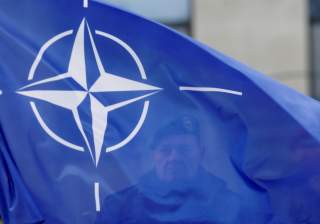Why NATO Isn't Ready to Take on Russia
Now that military tensions between Russia and the West have gone through the roof, most European states find themselves lacking credible warfighting capabilities.
Organizational Politics
The two central Western institutions and organizations—NATO and the EU—have over the decades created a logic of their own according to which the success of chosen policies is evaluated and appreciated. Nation-states can more easily define their national interests and evaluate successfulness of policies by the degree to which these interests have been attained. In the case of the EU and NATO however, there is nowhere near a shared understanding what the common goals to be pursued are, or which are suitable methods to be used while pursuing these somewhat ill-defined and in many cases contradictory interests.
Quite often success in the NATO or EU frameworks can be defined by the ability to formulate a policy that is coherent enough not to be evaluated by most observers and stakeholders as a failure or only window-dressing. Success, then, is when twenty-something nation-states can agree a common—although often quite watered-down—position on some issue that many member-states within these Western organizations deem important.
It is the nature of NATO and the EU which explains the above-mentioned “non-optimal logic” according to which the relevance and success of policies are evaluated. Both the EU and NATO are fora of consultations and competition over collective policies by twenty-nine member-states that have colossal differences in their political, economic, cultural and military traditions—not to mention their enormously different geostrategic positions. In addition to these differences—operating at another layer—both the EU and NATO are organizations with big bureaucracies and routinized ways of doing things.
Over the years and decades, the organizational charts of both establishments have expanded as new organs and bodies have been established. Even after some organizational cleanup operations, the way to do business within NATO or the EU is not flexible in any meaning of the word. Rather, we can easily locate an organizational and bureaucratic multipelis clerosis, which is rigidifying daily work and hindering fresh ideas to move forward. Decisionmaking by consensus opens the door for tit-for-tat politics and hard bargaining. It also makes a zero-sum approach to Alliance (and EU)-wide decisionmaking possible as every member-state tries to forward its national interests at every possible instance.
A Reality Check
Great-power rivalry is back. Russia is challenging the West in Europe and the wider Middle East region. China is projecting its power in the East and South China Sea areas. The ingredients for the “return” of a collective defense NATO are in place. Now it is up to the member-states of the Alliance to put their money where their mouths are: it is time to reinstate the big war perspective to defense and get rid of all the excess baggage that during the twenty-five years of the pos–Cold War era has accumulated in the “to do list” of NATO.
Jyri Raitasalo is docent of strategy and security policy at the Finnish National Defence University. Previously he served as head lecturer of strategy at the Finnish National Defence University. The views expressed here are his own.
Recommended:
Why North Korea's Air Force is Total Junk

